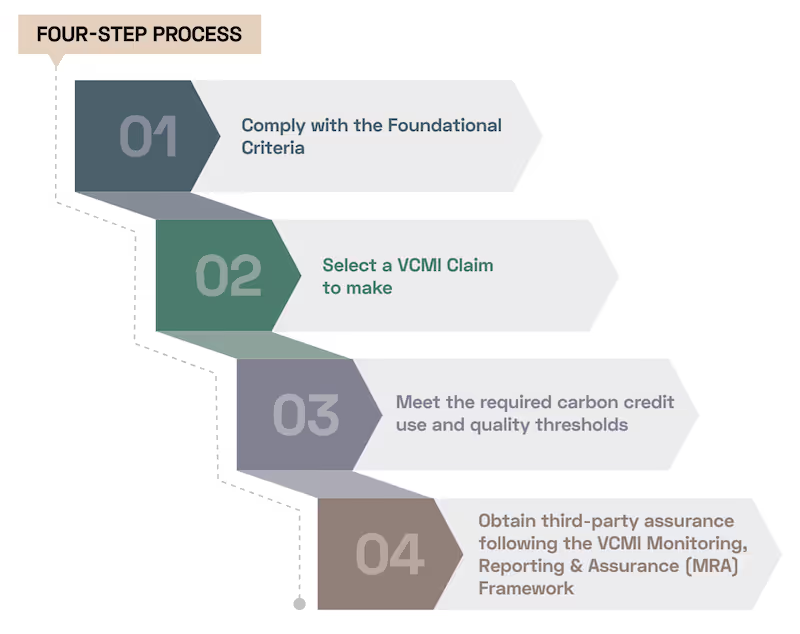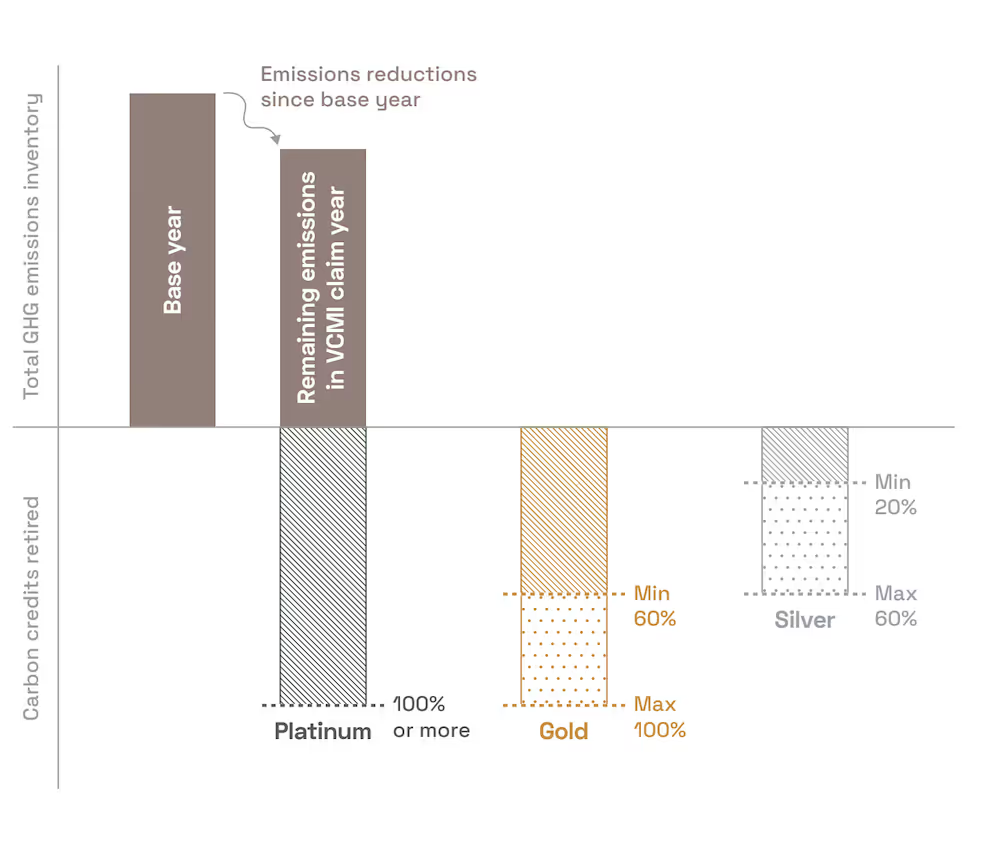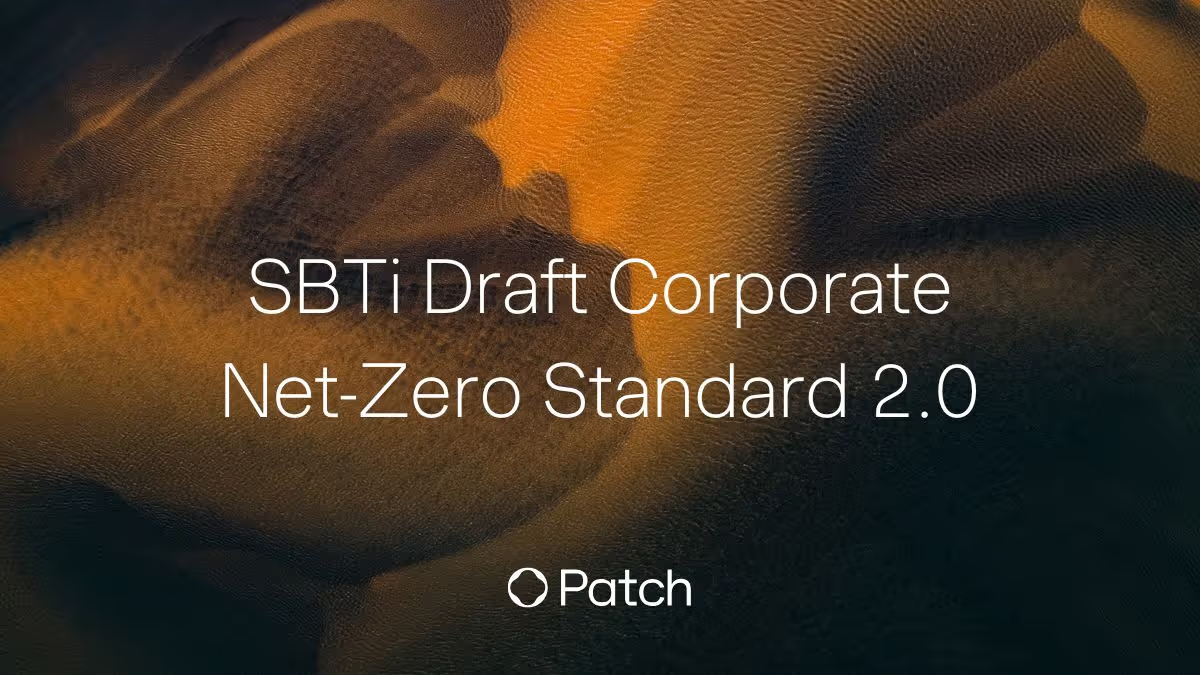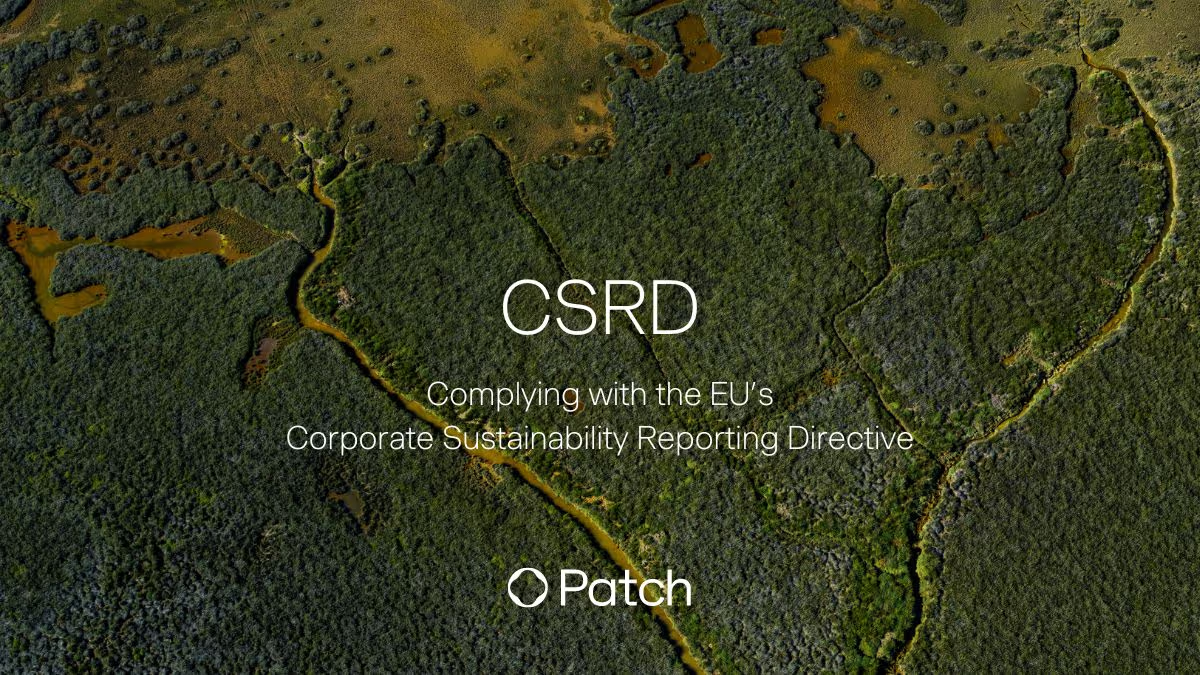VCMI, the Voluntary Carbon Market Integrity Initiative, released its Claims Code of Practice today, a rulebook aimed at providing clear guidance to companies and non-state actors on how to interact with the voluntary carbon market.
Alongside today’s release, VCMI also announced the creation of a Stakeholder Forum consisting of scientists, corporate leaders, policy experts, and others — including Patch’s Head of Corporate Affairs and Climate Policy, Lucy Hargreaves. As independent advisors, they’ll help shape the future of the Claims Code, ensure it’s actionable and accessible, and operationalize it into the market.
But what does this mean for the voluntary carbon market (VCM) at large? And how should companies react to these new standards? Here’s our take on what the Claims Code achieves, remaining questions, and what it all means for you.
What is the Claims Code of Practice?
The Claims Code of Practice is a set of standards and guidelines for how companies should interact with the VCM. Companies rightly face scrutiny in how they engage with carbon credits as part of their climate action strategy. Corporate climate leaders need a mechanism to know they’re making effective investments in the VCM, and the claims they make are aligned to scientific best practices and the goals set out in the Paris Agreement — the Claims Code aims to serve as that guide.
In order to make a Claim under the Claims Code, companies and non-state actors must take four steps:
- Comply with foundational criteria (including public disclosure of emissions, having science-based reductions goals, and policy advocacy that supports and doesn’t hinder the Paris Agreement targets)
- Decide which VCMI Claim to make
- Purchase carbon credits that meet the criteria for their specific claim
- Follow VCMI’s monitoring and reporting process, including getting third party assurance of their process

Key takeaways from the Claims Code of Practice
1. A step toward convergence for standards and guidelines across the market
Lack of regulation in the VCM has led to an influx over the last few years of voluntary standards bodies aiming to fill gaps and provide structure and best practices. In some cases, that’s led to more market confusion. However, with ICVCM’s release of Core Carbon Principles (CCPs) earlier this year, the recent publication of VCMI’s Claims Code of Practice, and the forthcoming “Beyond Value Chain Mitigation” guidance from SBTi, the market could finally be starting to reach a point of convergence.
These groups are starting to coordinate much more closely with each other, and the Claims Code is a prime example. The VCMI team has coordinated closely with other standards bodies in the space in developing their guidelines. This type of collaboration has huge potential to align the market.
VCMI is bringing in stakeholders across the ecosystem to create a more holistic approach for integrating carbon credits into global climate action strategies. For example, the Claims Code incorporates other standards bodies’ guidelines, such as:
- Any corporate buyer making a VCMI Claim must use ICVCM’s “CCP-Approved” carbon credits for any carbon credit purchases they make.
- When an activity type has not been addressed yet by ICVCM, companies can leverage CORSIA-eligible credits for a period of time.
- The Claims Code’s reduction component requires companies to follow SBTi’s criteria for setting near-term targets.
If other standards bodies follow suit in their upcoming releases — and if companies and project developers adopt them en masse — it could be the convergence the market has been waiting for.
Technology will also have a role to play in helping to coalesce the different standards by making it simpler from an operational perspective. Whether it’s easily sourcing a wide range of CCP-Approved credits or being able to generate a VCMI-compliant report in one-click, Patch will help make this connection seamless for buyers across our platform.
2. The rulebook enables iteration, so that perfect is not the enemy of good
The Claims Code offers three distinct levels of claims a company can make: Silver, Gold, or Platinum. These levels provide companies of all stages of their climate journey with a path toward making a credible claim — not only top-performing organizations. For example, a company who has just begun their climate journey can choose the Silver Claim and use carbon credits in an amount equal to 20%–60% of remaining emissions above and beyond its internal decarbonization efforts, as long as it demonstrates meaningful progress on reductions. Meanwhile, a company with more climate experience may make a Platinum Claim where that amount begins at 100% of remaining emissions in the most recent reporting year.

A company’s support for removal and avoidance solutions should never hinder bold and rapid emissions reductions. But VCMI’s Claims Code is a clear signal that companies can walk and chew gum at the same time, as there’s an urgent need for near-term support for carbon credit projects concurrent with rapid decarbonization. The next decade will be a key moment for accelerating the VCM so that multiple approaches can reach large-scale application by mid-century.
3. Transparency is table stakes
Historically, the VCM has been highly variable when it comes to what information exists for both claims and projects, as well as how accessible and transparent that information is. That kind of asymmetry casts doubt on the market as a whole, which creates risk as well as the perception of risk.
The Claims Code takes a step forward in ensuring transparency in the market. It states that company reporting must be verified by third parties and made publicly available to stakeholders via their website or in a report. In addition to the “claim type,” company reporting requirements include:
- All GHG emissions inventory
- Near-term reduction strategy and progress toward achieving net-zero by 2050
- Assurance that a company’s advocacy efforts are in no way compromising Paris targets
- Carbon credit purchase details and quality thresholds
VCMI has also published accompanying materials that make it easy for corporate sustainability leaders to understand the guidelines. Uptake will be a critical component to the success of the Claims Code; transparency and accessibility will be key to adoption.
The Claims Code of Practice vs. the Core Carbon Principles
In March, we covered the release of ICVCM’s Core Carbon Principles (CCPs). At a glance, ICVCM and VCMI have very similar acronyms — as do the names of their standards. (We’ll use “Claims Code” for short when talking about VCMI’s rulebook.) But these two documents actually fulfill very different roles in the VCM.
The CCPs are focused on what constitutes integrity for a carbon credit. It defines how a project should be registered and measured, the attributes it must have (permanence, additionality, etc.), and other criteria each credit must meet. In the context of carbon markets, these rules are primarily for suppliers.
The Claims Code, on the other hand, is primarily concerned with the other side of the market: buyers of carbon credits. Its guidelines help companies make decisions about their climate claim and how carbon credits can be used as part of it.
Where the Claims Code has room for improvement
One of the main points of market criticism of the Core Carbon Principles released this past spring was that they were incomplete. ICVCM released them with the caveat that the second part of the CCPs would be forthcoming later in 2023. Likewise, VCMI’s Claims Code comes with the disclaimer that additional guidance on reporting won’t be released until November. We also expect SBTi’s “Beyond Value Chain Mitigation” guidance in the second half of this year.
These are scientifically rigorous standards with many stakeholders involved in creating and improving them. It’s understandable that they take time to develop and release. However, time is of the essence.
We know that many buyers are awaiting the completion of these standards before investing in carbon credits, which means dollars that could be spent towards scaling climate solutions are sidelined. That’s capital that project developers could put to use immediately. We support and will continuously advocate for all three of these standard bodies to move as quickly as possible to operationalize their final guidance into the market.
What’s next?
For the VCM, the Claims Code represents a solid step toward better, more coherent guidance for corporate climate actors. This guidance, along with what ICVCM and SBTi are working on, will help bring renewed confidence and clarity to the VCM.
As always, Patch is here to help. Our climate solutions team can help you understand the standards landscape and implement a best-practice climate strategy today.
Next month, we’re also hosting a timely discussion on the state of all standards within the voluntary market and will be joined by VCMI to break down the Claims Code in detail. Click here to learn more and register.







